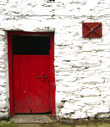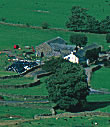Within the Lake District local building traditions have produced highly distinctive and characterful buildings, villages and towns.
The layout of streets and the spaces buildings enclose give each settlement a distinctive character. The tightly enclosed lanes of Hawkshead and Hartsop contrast to the spacious character of Caldbeck and Askham. Settlements develop differently for many reasons. For example, the market places of Broughton and Keswick reflect their importance as local trading centres whereas Troutbeck's elongated shape developed along a line of spring-fed wells.

Styles range from early “vernacular” buildings built to meet basic functional needs, through to Georgian, Victorian and Edwardian period properties. Buildings from these later periods were built according to the architectural fashion of their day such as classical, gothic or the Arts and Crafts movement.
Some buildings may have older vernacular buildings at their core but were re-fronted in a later style. However those built in the Arts and Crafts style intentionally celebrate vernacular features and building traditions.
Local building traditions have given the various architectural styles a distinctive quality, often unique to the Lake District. Bank barns, packhorse bridges, hogg houses, circular chimneys, “crow-step” gables and galleries all help to provide the area with a strong sense of place
The rich palette and rugged quality of local materials help link the contrasting styles of architecture and reflect the underlying geology. Walls were often built upon boulders or bedrock, with stone quarried from the nearest rock face or gathered from the land or nearby streams. Slate stone is a very common walling material in the heart of the Lake District, with limestone, granite and red sandstone used in outlying areas.
The green or bluey grey slate roofs, with slates becoming smaller towards the top of the roof - known as "diminishing courses", are a very prominent feature. Rough-cast and limewash finishes and the use of dressed sandstone and limestone add variety.

The Lake District's buildings, towns and villages are vital elements within the landscape. There is a strong visual connection between settlements and the surrounding countryside through drystone walls, hedgerows and the footpaths running between lanes and fields.
From scattered farms and barns in remote valleys, cottages nestled into the valley sides, to large country houses on the lake shore, the subtle relationship of the built and natural environment is essential to this area's beauty.